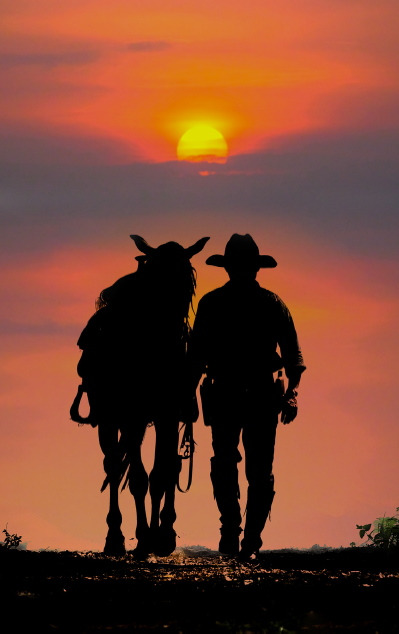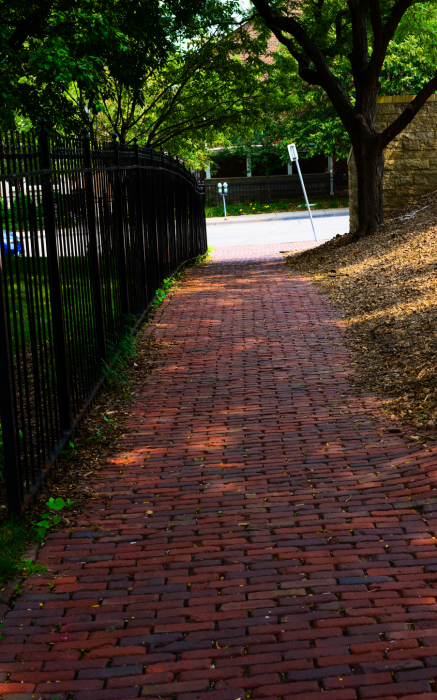 Why do we drive on the left?
Why do we drive on the left?Ever wondered why some countries drive on the left and some on the right-hand side of the road?
It turns out that this dates all the way back to the time of knights when riders rode on the left so that swordsmen had their weapon closest to their opponent and their scabbard on the left where it was not in their way when mounting their horse.
While some speculate that Americans switched to the right purely out of spite for the British, it turns out that this was most likely an evolution of farming. When the US began mass farming, wagons that were drawn by four horses were used to haul large farm products.
 Why do we enjoy a roller coaster?
Why do we enjoy a roller coaster?Why are roller coasters so popular?
It is thought that the earliest roller coasters can be traced back to ice slides in Russia in the 16 and 17 centuries which became popular with the healthy population. A summer version was later created by Catherine the Great involving wheeled carts. In the early 19 century, the idea spread to France where the first wheeled coaster on a track opened in 1817. The first American roller coaster was built in the US in the mid-1800’s as a scenic ride for tourists. These days, it is estimated that there are approximately 3,364 roller coasters in the World.
But what is the appeal to humans?
 Isn’t that ironic?
Isn’t that ironic?Did you know that the word “oxymoron” is itself an oxymoron?
The term oxymoron refers to a figure of speech in which condradictory terms appear in conjunction with each other such as “deafening silence” or “awfully good”. It is thought that by pairing these words the writer creates “tension” or a sense of irony.
However, the word “oxymoron” is taken from two Ancient Greek words “oxy” meaning sharp and “moron” meaning stupid!
 We’re a multicultural crew!
We’re a multicultural crew!As we welcomed our newest team member Tatenda (originally from Zimbabwe) , we got to thinking about multiculturalism in Australia. Did you know that around 50% of our population were either born overseas or have a parent who was born overseas?
About 1 in every 5 people speak a language other than English at home and collectively Australia is home to over 200 languages! You might be surprised to know that the single most common language other than English is in fact . . . Italian!! Ciao Bella!
Unsurprisingly, it was the discovery of gold in the 1850’s which led to Australia’sfirst rush of migration from overseas!
 Keeping it cool – air conditioning!
Keeping it cool – air conditioning!Named as one of Time Magazine’s 100 most influential people in 1998, Willis Carrier was the first to “solve the puzzle of controlling the indoor environment” with his invention of air conditioning in 1902 (Source: carrier.com).
Despite the incredible heat in Australia, air conditioning only became common in households in the last 20 years. Now – it’s hard to imagine a time without it!
Willis Carrier was in fact trying to solve the puzzle of controlling the humidity in a printing plant in Brooklyn, New York. But
this game changing technology ultimately changed the way we live – how food is produced, where and how we shop, socialise and work and even our daily commute!
 St Patrick’s Day
St Patrick’s DayIn honour of the March fun of St Patrick’s Day, we thought we would entertain you with a few fun facts about the Irish holiday.
Did you know that St Patrick (the patron saint of Ireland) was not actually born in Ireland? It turns out that he was born in Roman Britain and was kidnapped by Irish raiders and sold into slavery in Ireland when he was just 16 years old! His original name was Maewyn Succat.
You may also be unaware that the first St Patrick’s Day parade actually took place in the USA and not Ireland (it was held in Florida in 1601). At this time, the colour associated with the day was actually blue but was later changed to green due to the colour of Ireland’s landscape!
 The number 42!
The number 42! This is the 42nd edition of our Tech Simply newsletter. As you’re probably aware, Douglas Adam’s popular science-fiction novel The Hitchhiker’s Guide to the Galaxy revealed that the answer to the “Great question of Life, the Universe and Everything” is 42. So we pondered? What is the significance of 42?
Jean-Paul Delahaye pondered this question in an article in Scientific American in 2020: In ancient Egyptian mythology, the number 42 represents the number of judges that a deceased person would face during the judgement of their soul in the afterlife where they had to declare their innocence against 42 specific sins.
A marathon is 42.194km which corresponds with the distance the Greek messenger Pheidippides traveled between Marathon & Athens to pass a message of victory.
 Red for Chinese New Year
Red for Chinese New YearWith Chinese New Year currently in fully swing and over 2 billion people around the world celebrating the holiday, did you know the significance of the colour red?
According to Chinese legend a mythical beast named “Nian” would devour villagers on New Years Eve but he was scared away by the colour red and loud noises. By wearing red and celebrating with fireworks people were able to ward off evil spirits and bring positive energy for the new year. Culturally red represents fire and energy and is a symbol of vitality, celebration and good fortune.
 A decorated tree?
A decorated tree?Why do people bring trees inside and decorate them at this time of year? It’s an odd tradition!
It is understood that this tradition started with ancient Romans who believed that trees signaled the “return of life” after a long winter. It is thought that they brought them inside as part of their celebration of the winter solstice (the shortest day of the year). Early decorations of these trees included nuts and fruit to represent fertility and abundance.
During the 16th century, Germans were thought to be the first to decorate these trees with lights.
 Storms Ahead!
Storms Ahead!Did you know that about 2,000 thunderstorms rain down on Earth every minute? In fact, Australia experiences between 40 and 40.5
million lightning strikes in November which is typically our most stormy month.
Surprisingly, only about 100 people per year are injured by lightning strikes in Australia with most of these occurring due to indirect strikes, which occur when the ground becomes electrified after a lightning strike.
You’re more likely to be struck by lightning in Australia the further north you go so be careful up north!
 Stingy Jack – now a Jack-o’-Lantern
Stingy Jack – now a Jack-o’-LanternHave you ever wondered where the carving of a Jack-o’-Lantern at Halloween originated?
Legend has it that a drunkard known as Stingy Jack once came across Satan who had come to collect his soul. Jack made one last request and asked if he could drink ale before he departed. Satan agreed and after drinking, Jack asked the devil to pay knowing that Satan did not carry any money. He convinced the devil to turn himself into a silver coin to pay the bartender and told him that he could change back afterwards. He then tricked the devil and pocketed the coin along with a silver crucifix. The presence of the cross prevented the devil from escaping his form.
 Wattle – our National Blossom!
Wattle – our National Blossom!Did you know that 1 September was National Wattle Day?
First celebrated in 1910, Wattle is thought to symbolise optimism, resilience, renewal, diversity and unity. During the World Wars wattle became a symbol of home for military personnel serving overseas, and as a means of raising money for organisations such as the Red Cross. Wattle Day badges as well as wattle sprigs were sold.
You also may not know that Australia’s national colours of green and gold were chosen in April 1984 as they represented wattle’s green leaves and gold blossom.
 Are all fruits vegan?
Are all fruits vegan?You may have thought that all fruits are considered vegan but did you know that some figs are actually not vegan-friendly?
While figs are usually considered a fruit, they are actually inverted flowers and their buds bloom inside their pods. Pollination occurs when
a female wasp crawls inside the fig but she unable to back out again due to the size of the opening, so she lays her eggs inside before she dies. When the eggs hatch the wingless males help the winged females to escape by creating tunnels for them. After the remaining wasps have all died, the enzymes inside the fig dissolve the insect.
 Inventing the moving staircase
Inventing the moving staircaseHave you ever thought about that moving staircase that you ride on each day? Did you know that the first patent related to an escalator was granted in 1859? A second patent was granted for an “inclined elevator” in 1892 and this one was originally intended as a novelty ride at Coney Island in New York! The modern escalator that we are more familiar with was re-designed in 1897 by Charles Seeberger who partnered with Otis Elevator Co to produce the first commercial escalator in 1899.
Escalators were intended to move larger numbers of people more efficiently than elevators but with the same space occupancy as a staircase.
 Hoping for a white winter?
Hoping for a white winter?Thinking about skiing over the winter? Did you know that the word “ski” comes from the Norwegian word skio which translates into “piece of wood”? The Norwegians are so into skiing that they were the first country to introduce a specialised ski unit in their army in 1721! Be careful with your knees – about 35% of skiing accidents result in some form of knee injury (although interestingly skiers typically have fewer injuries
than football players).
And in case you needed any more motivation – did you know that moderate downhill skiing burns around 400 calories per hour?
 The Power of a Good Book
The Power of a Good BookAs the weather cools down and some of you may be dreaming of just curling under a blanket to read a good book . . . did you know that the
most expensive book ever purchased was Codex Leicester by Leonardo Da Vinci which was purchased by Bill Gates for USD30.8 million in 1994!
And if you want an excuse to just sit and read for a while, did you know that the longest sentence ever published is from Jonathan Coe’s book The Rotter’s Club which contains over 13,955 words. In case you’re curious, the longest word contains 189,819 letters as in the name of a giant protein!
 Did April Fool You?
Did April Fool You?Love it or hate it, April Fools’ Day has been around for a very long time. Some say it began in Ancient Rome where the festival of Hilaria was held on March 25 where people dressed up in disguises to mock others – this may have eventually moved to April 1st.
Others say it began in France in 1564 when the country moved from the Julian calendar to the Gregorian calendar with the new year moving from April 1st to January 1st. People who were slow to get the news or continued to celebrate it in April were known as “April Fools” and often found themselves as the butt of jokes and hoaxes.
 Thinking about a snooze?
Thinking about a snooze? With daylight saving about to end, it got us to thinking about sleep . . .
You might think that sleep time is wasted time but did you know that the average person burns around 400 calories every night while they’re asleep! And interestingly, cats sleep approximately 16 hours per day while elephants in the wild typically sleep only 2 hours a night.
You’ve all heard the message that you should stay away from your electronic devices before bed but it’s amazing to think about some of the impacts of technology on our sleep. Did you know that approximately 12% of people dream in only black and white? Before the
invention of colour television, this percentage was roughly 65%. Who knew technology impacted our sleep even back
then?!
 Leaping into 2024!
Leaping into 2024!What’s with Leap Years? It takes the Earth 365 days, 5 hours, 48 minutes and 45 seconds to circle once around the sun. Since our calendar only has 365 days we need to add an extra day to our shortest month every four years or we would find ourselves off by about 24 days every century! We would be losing almost 6 hours every year!
And did you know that technically, it’s not every four years? There’s actually a leap year every year that is divisible by four but century years must also be divisible by 400. The year 2000 was a leap year but the years 1700, 1800 and 1900 were not!
So what will you do with the extra 1,440 minutes this leap year?
 Happy New Year!
Happy New Year!However you bring in the New Year, there seems to be a whole lot of superstition around the world regarding particular actions that bring good luck for the year ahead. Have you ever thought about some of the more unusual practices?
 Gingerbread!
Gingerbread!Have you ever wondered why Gingerbread Men and Gingerbread Houses are associated with Christmas? It turns out that historians can’t quite agree on its origin.
Theory 1 says that the increasingly complex designs originated around the time of the winter December market stalls in Vienna in 1298 and quickly became a staple of the winter holidays.
Theory 2 says that they date back to the time of Elizabeth 1 who had them baked to resemble guests that she was expecting for a party in December although they seem to have originated in Germany in the form of houses some time earlier and were popularised with the publication of the Brother’s Grimm fairytale – Hansel and Gretel.
 Golden History
Golden HistoryDid you know that the Gold Coast was originally known as simply the South Coast due to its location south of Brisbane?
This year the the 7th Annual ISEE Australia Drill and Blast Down Under Conference was held at The Star Gold Coast which led us to thinking about the venue’s name. It turns out that due to over-inflated prices for real estate and other goods after World War 2 led to the
nickname of “Gold Coast” from about 1950. Despite some initial resistance from locals who considered the term to be derogatory, the city eventually warmed to the name and the area was officially renamed the Gold Coast in 1959.
 Wonderful Western Australia
Wonderful Western AustraliaWith several of our team spending time over in Western Australia these past few months, it encouraged us to explore some of the more unique features of Australia’s largest state.
Did you know that Western Australia is home to Australia’s largest gold mine, is the world’s largest producer of pearls, and it’s capital city Perth has the highest number of self-made millionaires per capita! Phew – that’s a lot of titles!
Not only that, but did you know that Western Australia has over 12.500km of coastline? Anyone looking for a quiet beach getaway?
 What is a letterman jacket??
What is a letterman jacket??When Nick moseyed into the office one day wearing his Varsity Jacket, we began to wonder how this American tradition really began.
It turns out that the jacket can be traced back to that same university which brought us Facebook -Harvard University (although MANY years before).
In 1865 the baseball coaches at Harvard University wanted to celebrate their best players for their achievements. They introduced thick wool sweaters embellished with a large “H”. These sweaters eventually became known as “The Letterman”.
The jacket was considered very prestigious and elitist and only the most deserving players could keep it (anyone who sat on the bench or played little had to return it at the end of the season!)

Mark recently had the opportunity to stop by the Wellington Dam in Collie (Western Australia) which is now home to the biggest dam mural in the world (over 8,000 square metres)!
Completed in February 2021, the painting of this mural took an incredible 4 months to complete and included the artist needing to dangle from ropes at 4am wearing a headlight as well as a custom floating platform which was used to move around the surface. With no opportunity to create a draft Guido Van Helten (who has also painted a mural inside a nuclear cooling tower in Chernobyl amongst other works) worked with locals to come up with the unique design.
 Is pink really just for girls?
Is pink really just for girls?With the recent release of the Barbie movie, all things pink are now firmly back in the spotlight. You might associate pink with all things feminine and girly but did you know that if you go back to the 18th century pink was considered to be a masculine colour?
Historians believe that this was as a result of its relationship to red which was associated with passion, activity and aggression. It was often seen as a colour associated with class and luxury. By the 1930’s department stores had influenced buyers to such a point that pink for girls and blue for boys had firmly imprinted on social culture.
 Cheers to South Australia!
Cheers to South Australia!While many people hear the word “wine” and think of France, did you know that Langmeil Freedom vineyard (founded in 1843 in the Barossa Valley) is not only the oldest vineyard in Australia but also home to the oldest still producing Shiraz vines on the planet!
More than half of all wine produced in Australia comes from South Australia. The Barossa Valley alone has total vineyard area of 11,156ha!
In fact, Adelaide is recognised as one of the Great Wine Capitals of the World (alongside Bordeaux, Porto and Verona).
 Sporting Cheer
Sporting CheerHow much time do you get for yourself to participate in sport? Did you know that according to a study conducted by the Australian Sports Commission over 63% of children participate in sport outside of school each week? The peak age for sports participation is 9 – 11 years
old. These figures start to drop dramatically between the ages of 12 – 14 years with only 28% of adults participating in sport weekly.
This is what made it so much fun to participate in the Annual IQA Golf Day this month – to see so many of our peers, colleagues, customers
and friends enjoying being physically active together (and taking a moment to be social).
 Busy Bees!
Busy Bees!It turns out the expression “busy bees” is no exaggeration. Did you know that a bee’s wings stroke 11,400 times per minute (around 200 times per second!)? The queen bee lays approximately 1,500 eggs per day! And did you know that the female worker bees never
sleep (sounds familiar😉)!
All this work and yet one bee will only make about 1/2 a teaspoon of honey in its lifetime! And in this brief 6-8 week lifespan, a worker bee will fly the equivalent distance of 1 ½ times the circumference of the Earth.
 Silence is . . . scary?!
Silence is . . . scary?!When we think about sound, we often become a bit focussed on really loud or annoying sounds that we would prefer to avoid but did you know that a super quiet space can also be a bit overwhelming?
Did you know that the quietest place on earth, is an anechoic chamber at Orfield Laboratories in Minnesota? It is so quiet that the longest anybody has been able to bear it is 45 minutes. People inside the chamber begin to hear their own heartbeat, lungs, stomach and sometimes even their own blood pumping! The silence becomes so overwhelming that people begin to lose their orientation and anyone who stays in there longer than 30 mins needs to sit down!
 Cowboys, Stetson’s and Texas!
Cowboys, Stetson’s and Texas!Mark returned to the office this month following his trip to San Antonio, Texas for the ISEE conference wearing his black cowboy hat with great style which made us curious about the origins of this fine hat.
Did you know that the famous Stetson hat, which many cowboys still wear today (think Yellowstone!) was made of tough felt that allowed it to also double up as a drinking bowl for both the cowboy and his horse? Once considered a symbol of prosperity, these hats are still being produced over 150 years later with over 3,300,000 produced each year making Stetson the world’s largest hat maker.
 What are your 2023 resolutions?
What are your 2023 resolutions?With many people making New Year’s Resolutions at this time of year, have you ever wondered how this tradition
began?
It turns out that people have been making New Year’s resolutions for over 4,000 years! For the new year Ancient Babylonians would make promises to the gods to pay their debts and return borrowed items. They believed that if they kept these promises that the gods would look favourably upon them for the year ahead. Conversely, the believed that if they broke their promises that the gods would punish them! Not too many people would be worried about
the consequences these days but it’s interesting to know the history!
Christmas really does bring us together!
 Did you know that on the 16 December 1965, the song ‘Jingle Bells’ made history by becoming the first song to be played in space
Did you know that on the 16 December 1965, the song ‘Jingle Bells’ made history by becoming the first song to be played in space
during NASA’s Gemini 6A space flight?!
It probably won’t surprise you to learn that in Australia the busiest time to travel is during the Festive Season. Over one fifth of Australia’s annual flights are taken during the 30 days surrounding Christmas.
In a recent survey conducted by the Red Cross over 74% of people intend to spend Christmas with their family which is really heartwarming!
Sometimes sports unites us!
Never without controversy, the FIFA World Cup has been played for almost 100 years with the first match played in July 1930 (France played Mexico and won 4-1). Interestingly, the first live television transmission of the World Cup was not until 1954 when it was hosted in
Switzerland.
There’s certainly money to be made in World Cup Soccer – did you know that the winning team at the 2022 World Cup final will receive $42million in prize money?! As for the fans – during the 2010 South Africa World Cup over 3,170,000 beers were sold within the
stadiums!

Love it or hate it, all things Halloween and Trick or Treating have certainly found their way into Australian culture in recent years. And one of the creepier symbols is that of the spider. But did you know that spotting a spider on Halloween is considered lucky? It is believed that if you see a spider during Halloween it means that a loved one is watching over you.
We often hear our field technicians commenting that when they go on site to calibrate a monitor that has been housed in an environmental enclosure that they can be home to a literal village of spiders (I believe 18 different spiders was the record!). Now to find a way to send the technicians out to calibrate during Halloween . . . 🤔 It could be lucky!!

While preparing our latest blog on Environmental Monitoring Ecosystems, we started thinking about ecosystems in general. Did you know that on earth about three quarters of ecosystems by area are actually aquatic? This includes rivers, lakes, oceans. shores and wetlands.
Interestingly, the term “ecosystem” was first coined by English botanist Arthur Tansley in 1935 but it’s use has become more broad over the years as we consider our interdependence in all aspects of life. Our recent experiences during COVID isolation and shutdowns have made this even more apparent as we have all been forced to recognise our reliance on other people, companies and countries. Hopefully recent times have made us more considerate with our relationships with others.

Did you know that in a regular year, no other month starts on the same day of the week as August (except in a leap year when February will also start on the same day of the week as August)?
August is also the month of some significant world events including Martin Luther King’s “I have a dream” speech in 1963 and the eruption of Mount Vesuvius which destroyed the city of Pompeii in 79AD. And you might not know that the Mona Lisa was famously stolen in August of 1911 and wasn’t recovered for two years!
And if you’re going out for a bite to eat this weekend, you might be interested to know that the sandwich was invented in August 1762 when the Earl of Sandwich requested two pieces of bread with meat inside.

Did you know that the first red brick street in the world was laid on Summers Street, Charleston, West Virginia in 1870.
Prior to this time, most roads tended to be made from dirt and gravel but as you can imagine, this was not the most
helpful construction material during periods of wet weather. The addition of more horse-drawn carts and early automobiles added additional pressure on these roads and a man called Mordecai Levi from Charleston, West Virginia decided to try something new – a red brick! Following this trial, the new method became increasingly popular and Mr Levi even took a patent out on his design.
Whilst not so popular today, they’re an interesting piece of history in many older cities.

Have you ever achieved a hole in one while playing golf? No? Don’t worry, you’re not alone – did you know that due to the diameter of the hole, you only have approximately 1 in 12,500 chance of achieving this?
Of course, it’s probably easier these days with golf balls made from a tough, coated rubber. But did you know that the first golf balls were actually made from leather wrapped with boiled goose feathers which were then stitched and painted? I can’t imagine how someone even came up with this original design!
 2022 | VOLUME 9
2022 | VOLUME 9After the past few months that we’ve been through, you should be glad that you don’t live in Maryland, USA. Did you know that in 2012 a “rain tax” was signed into law by the state legislature. Nine counties, including the city of Baltimore pay the annual fee that is described as a “user fee charged to property owners for the service of managing the polluted runoff coming from their property”.
Wow! I’m sure glad they don’t have a law like that in Australia!
We hope you’ve all stayed safe and dry over the past month while we have once again been inundated with rain. We’ve almost forgotten what blue sky looks like here in Brisbane!
 APRIL 2022 | VOLUME 8
APRIL 2022 | VOLUME 8Growing up in Australia, you can always guarantee someone will bake some Anzac biscuits on Anzac Day, but do you know their history?
Anzac biscuits were traditionally hard biscuits that many men were rumoured to have “broken their teeth” on while eating. They became one of the soldiers’ staple foods, not as the treat we know today, but rather because they could be ground down to make porridge, thicken a stew, fried as fritters and even jokingly described as suitable for artifacts that could be passed onto future generations.
Today, they have become a cherished symbol used to honour our fallen troops. In fact, the recipe is so protected that anyone who tampers with the formula could face fines and jail time!
 MARCH 2022 | VOLUME 7
MARCH 2022 | VOLUME 7Are floods a rare occurance?
While in ancient Egypt, people looked forward to the floods along the Nile River because the floods brought rich soil for farming, in Brisbane we haven’t enjoyed it quite so much. We’re pretty sure that the end of Mark’s street isn’t meant to look like this (see photo, right)!
Despite appearing to be an “irregular event” in most people’s minds, did you know that by world standards, they are not that uncommon – in fact, 90% of all natural disasters in the US involve flooding. A study conducted in 2014 by Beta Aqueduct showed that approximately 21 million people worldwide are affected by river floods each year on average!
Patents, people and penicillin
I’m sure you know that Valentine’s Day falls in February but did you also know that there are some other significant world events that occurred in this super short month?
– On Valentine’s Day in 1876 Alexander Graham Bell applied for his telephone patent entitled an “Improvement in Telegraphy”.
– On 14 February 1929 penicillin was introduced by Sir Alexander Fleming.
– Patents for the revolver, the sewing machine, the first oil burning diesel engine and the Gramophone were all granted in the month of February.
– Mark Zuckerburg created Facebook in February 2004.
Secrets of the weather!
Did You Know: According to folklore, the weather of the first 12 days of the year is said to be indicative of the following 12 months.
If that’s true, we could be in for a rainy year ahead!
Then again, it’s been said that you can tell the temperature by counting a crickets chirps. The warmer the weather, the easier the cricket’s muscles move so they chirp more frequently. Count the number of chirps in 25 seconds, divide by 3 and then add 4 – that’s the temperature!

It’s time to add the star!
There’s something very special about being the person who gets to hang the star on the top of the tree. It’s traditionally the last decoration to be put in place and the kids are always vying for the honour. So back here at the office we decided that it was only fitting that our Director, Bruce, be given the honours since he thinks he’ll be retired by next year!

We had a bit of fun while writing our latest blog. We decided to write an article on geophone mounting and naturally our resident Hillbilly provided some alternative “mounting” techniques!
Perhaps this is not the most conventional method and may not produce the results that you were expecting, but it certainly produced a laugh or two in the office!

Look who found his way back to us!
Well, maybe not the same bird but none-the-less, across 15km of Brisbane and across the other side of the river we have once again been visited by the Bush stone-curlew! As you may (or may not know) our previous office in West End was regularly visited by these noisy birds and there was something comforting about one joining us once again.

This month we kick off our first company newsletter.
What better way to start than some trash talk? Literally! This month while on a site visit to Maroochydore, we stumbled across the new Automated Waste Collection System that has been introduced by Sunshine Coast Council.
| Cookie | Duration | Description |
|---|---|---|
| cookielawinfo-checkbox-analytics | 11 months | This cookie is set by GDPR Cookie Consent plugin. The cookie is used to store the user consent for the cookies in the category "Analytics". |
| cookielawinfo-checkbox-functional | 11 months | The cookie is set by GDPR cookie consent to record the user consent for the cookies in the category "Functional". |
| cookielawinfo-checkbox-necessary | 11 months | This cookie is set by GDPR Cookie Consent plugin. The cookies is used to store the user consent for the cookies in the category "Necessary". |
| cookielawinfo-checkbox-others | 11 months | This cookie is set by GDPR Cookie Consent plugin. The cookie is used to store the user consent for the cookies in the category "Other. |
| cookielawinfo-checkbox-performance | 11 months | This cookie is set by GDPR Cookie Consent plugin. The cookie is used to store the user consent for the cookies in the category "Performance". |
| viewed_cookie_policy | 11 months | The cookie is set by the GDPR Cookie Consent plugin and is used to store whether or not user has consented to the use of cookies. It does not store any personal data. |